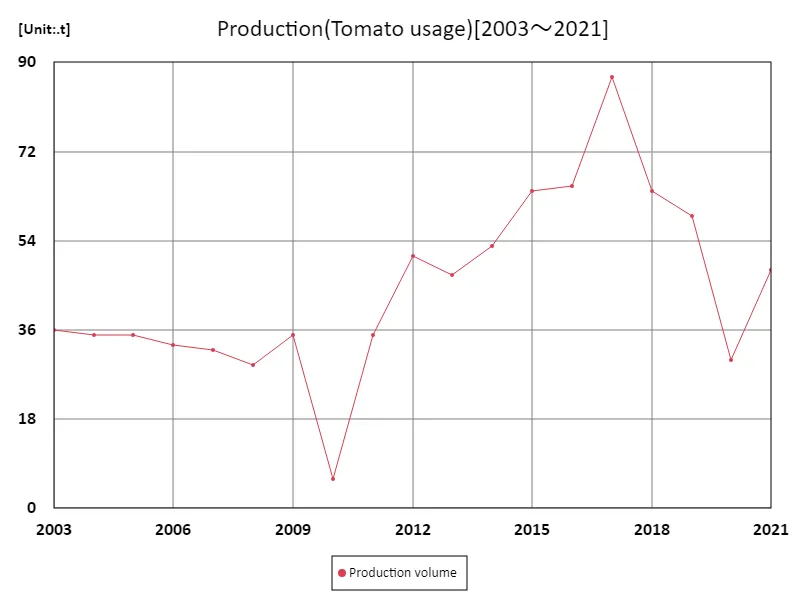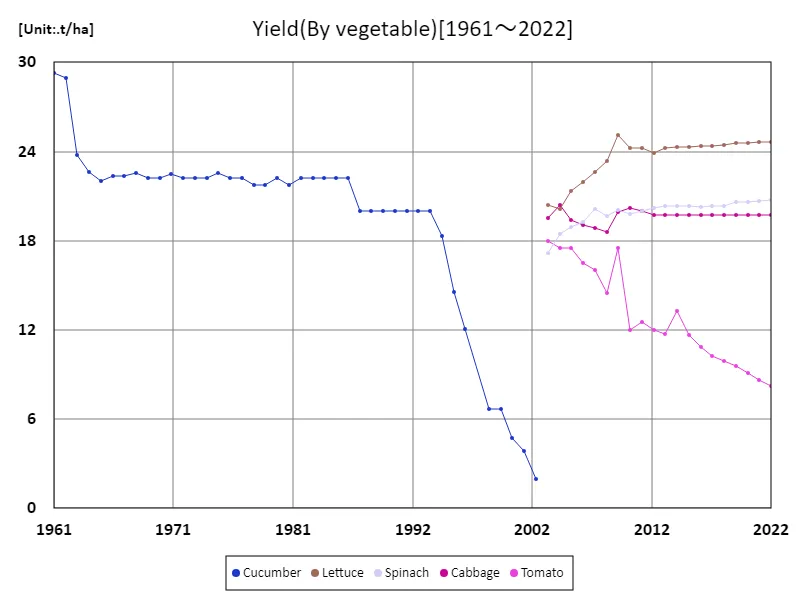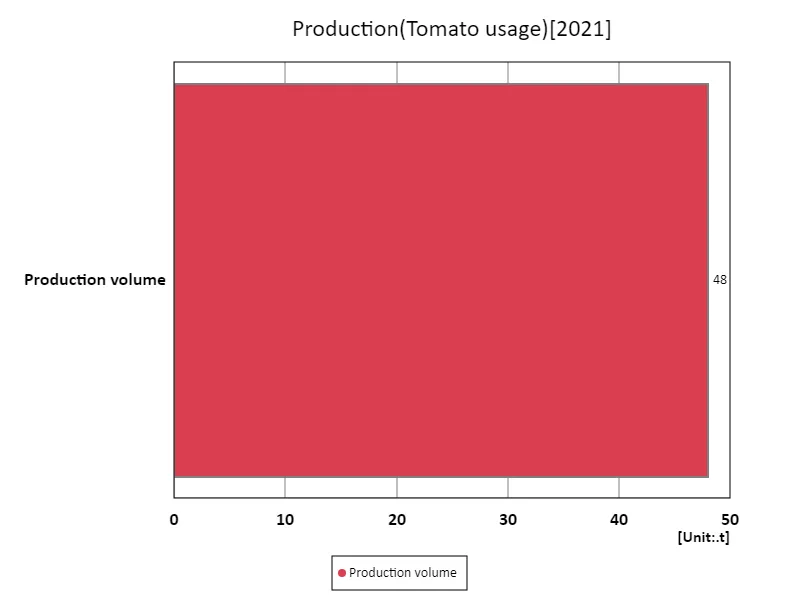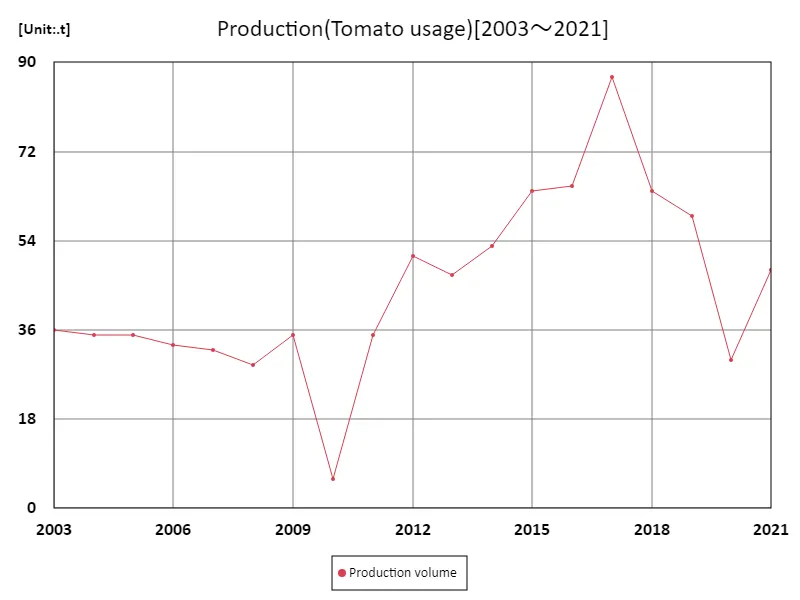Abstract
In 2022, Singapore’s vegetable production totaled approximately 20,000 metric tons, with spinach leading at 2.18 kilotons.STATISTAOver the past decade, local vegetable production has declined from about 24,000 tons in 2019 to 19,881 tons in 2022.新加坡統計局This reduction is attributed to factors such as limited arable land, urbanization, and competition from imported produce. Despite these challenges, Singapore continues to prioritize food security by promoting urban farming and technological advancements in agriculture.情報源
Production (by vegetables)
In 1961, Singapore’s vegetable production peaked at 7.11 kilotons, with cucumbers leading at 2.95 kilotons. By 2022, total vegetable production had decreased to approximately 20,000 metric tons, with cucumbers contributing significantly to this decline.STATISTAThis trend reflects challenges such as limited arable land, urbanization, and competition from imported produce. Despite these obstacles, Singapore continues to prioritize food security by promoting urban farming and technological advancements in agriculture.情報源


The maximum is 87t[2017] of Production volume, and the current value is about 55.2%
Yield(by vegetable)
In 1961, Singapore’s cucumber yield reached a peak of 29.3 tons per hectare. By 2022, this figure had declined by 6.82%, reflecting challenges such as limited arable land, urbanization, and competition from imported produce. Despite these obstacles, Singapore continues to prioritize food security by promoting urban farming and technological advancements in agriculture.STATISTA情報源


The maximum is 29.3t/ha[1961] of Cucumber, and the current value is about 6.82%
Land use (by vegetables)
In 2021, Singapore’s vegetable production saw a uniform yield, with land use for vegetable cultivation reaching a maximum, average, and total of 48 tons per hectare. This consistency reflects efficient land management and crop selection. Despite challenges like limited space and urbanization, the country has focused on maximizing yield per hectare through technological advancements in farming. These efforts contribute to Singapore’s broader strategy of enhancing food security while maintaining sustainable agricultural practices in an increasingly urbanized landscape.


The maximum is 48t of Production volume, the average is 48t, and the total is 48t
Tomato usage
In 2003, Singapore’s tomato production peaked at 87 tons, marking the highest recorded value to date. Since then, production has remained relatively stable, reflecting the country’s ongoing efforts to optimize vegetable cultivation within its limited arable land. Tomatoes continue to be a key crop in local agriculture, although urbanization and competition from imported produce have posed challenges. Singapore’s focus on enhancing food security through technology and urban farming innovations ensures that tomato production remains a vital component of the nation’s agricultural landscape.


The maximum is 87t[2017] of Production volume, and the current value is about 55.2%
Main data
| Production(Tomato usage) [nt] | |
|---|---|
| Production volume | |
| 2022.0 | |
| 2021.0 | 48000000000 |
| 2020.0 | 30000000000 |
| 2019.0 | 59000000000 |
| 2018.0 | 64000000000 |
| 2017.0 | 87000000000 |
| 2016.0 | 65000000000 |
| 2015.0 | 64000000000 |
| 2014.0 | 53000000000 |
| 2013.0 | 47000000000 |
| 2012.0 | 51000000000 |
| 2011.0 | 35000000000 |
| 2010.0 | 6000000000 |
| 2009.0 | 35000000000 |
| 2008.0 | 29000000000 |
| 2007.0 | 32000000000 |
| 2006.0 | 33000000000 |
| 2005.0 | 35000000000 |
| 2004.0 | 35000000000 |
| 2003.0 | 36000000000 |
| 2002.0 | |
| 2001.0 | |
| 2000.0 | |
| 1999.0 | |
| 1998.0 | |
| 1997.0 | |
| 1996.0 | |
| 1995.0 | |
| 1994.0 | |
| 1993.0 | |
| 1992.0 | |
| 1991.0 | |
| 1990.0 | |
| 1989.0 | |
| 1988.0 | |
| 1987.0 | |
| 1986.0 | |
| 1985.0 | |
| 1984.0 | |
| 1983.0 | |
| 1982.0 | |
| 1981.0 | |
| 1980.0 | |
| 1979.0 | |
| 1978.0 | |
| 1977.0 | |
| 1976.0 | |
| 1975.0 | |
| 1974.0 | |
| 1973.0 | |
| 1972.0 | |
| 1971.0 | |
| 1970.0 | |
| 1969.0 | |
| 1968.0 | |
| 1967.0 | |
| 1966.0 | |
| 1965.0 | |
| 1964.0 | |
| 1963.0 | |
| 1962.0 | |
| 1961.0 | |



Comments